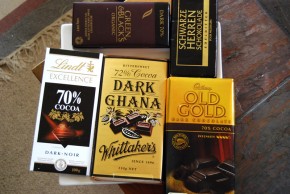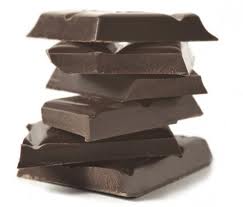What is the first thing you think of when you think of Easter? Along with the Easter bunny, it's likely that chocolate is one of the first things that comes to mind. Easter is the one time of the year when it is apparently 'ok' to indulge in extra of this delectable treat.
But is it? Here we will discuss the pros and cons of chocolate consumption, and what you can do to make your Easter not only enjoyable, but healthy as well.
So- what are the reasons we should not be indulging in a giant pile of Easter eggs?
Chocolate is very high in saturated fat and sugar. A standard 50g bar of Cadbury dairy milk has 1110kJ, 9g saturated fat, and 27.8g of sugar. That is more than half sugar! 50g of Lindt 70% Cocoa Excellence chocolate has 1090kJ, 12g saturated fat and 14 g of sugar. We all know the dangers of over consuming fat and sugar- weight gain, heart disease, diabetes etc etc
But what about the reasons we should?
Cocoa itself, the key ingredient in dark chocolate, contains many flavonoids that are beneficial for health. A study by researchers at Monash University showed that dark chocolate has blood pressure and cholesterol lowering properties (due to their flavonoid content). The flavonoids in cocoa may also improve cognitive function and reduce insulin resistance. Theobromine is a compound found in cocoa that can assist with improving blood flow and act as a diuretic. Cocoa also contains antioxidants, and small amounts of other vitamins and minerals, which are also beneficial for health.
But im looking at the nutrition information panel, and the contents looks really similar between dark chocolate and milk chocolate. What's the difference?
The difference is in the ingredients list. Whilst the first two ingredients in most dark chocolate is cocoa mass and cocoa powder, in milk chocolate full cream milk and sugar are the top two ingredients. This means that the product is mostly made up of these. Overall, dark chocolate is a purer form of eating cocoa, which is why it is recommended to consume at least 70% cocoa dark chocolate, preferably higher.
Now I am not here to be the grinch that stole Easter, but is it really necessary to buy that 10kg bunny? Or take half the stores' eggs home to spoil your kids because 'they deserve it'. Now i am not saying 'you cant eat chocolate'- far from it. But surely there is some better ways to spoil your family and yourself, rather than excessively gorging yourselves. Wouldn't it be nicer to take the family to the park or beach for the day and play outside, or maybe create an Easter egg hunt using mini eggs and other non-food items (eg a book, tennis ball, cricket bat). Doing these things, and giving a small amount of chocolate only means that they (and you) will not only enjoy the chocolate more, but you will be much healthier for it!
So, go ahead and treat yourself this Easter. Remember though to consume only small amounts at a time, as while the health benefits are there, there are still a lot of kilojoules if you're watching your waistline! And remember there are other ways than eating chocolate of enjoying the four day weekend!
I'd love to hear your ideas of other ways to enjoy Easter!
Have a happy and safe Easter everyone!
Chloe McLeod is a dietitian at BJC Health.
This blog focuses on diet & nutrition generally and diet & nutrition in relation to the treatment of arthritis and arthritis-related diseases. Contact us if you'd like our help in managing diet-related health issues.



